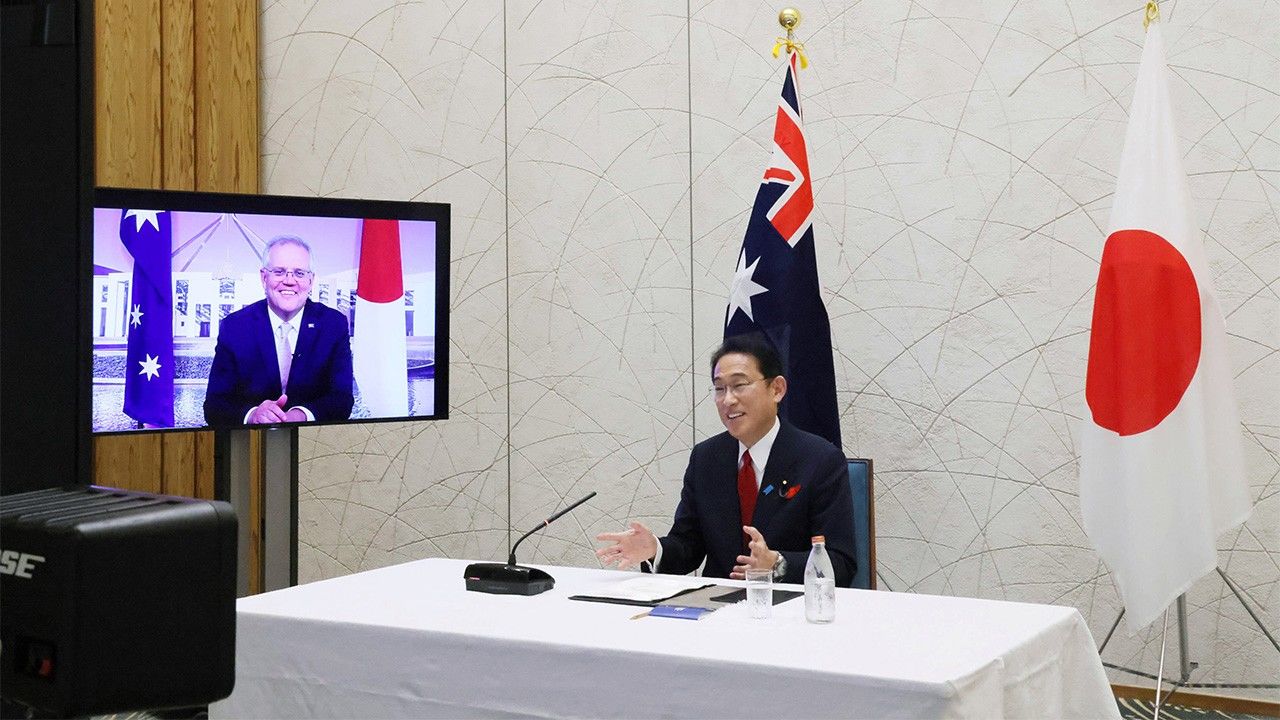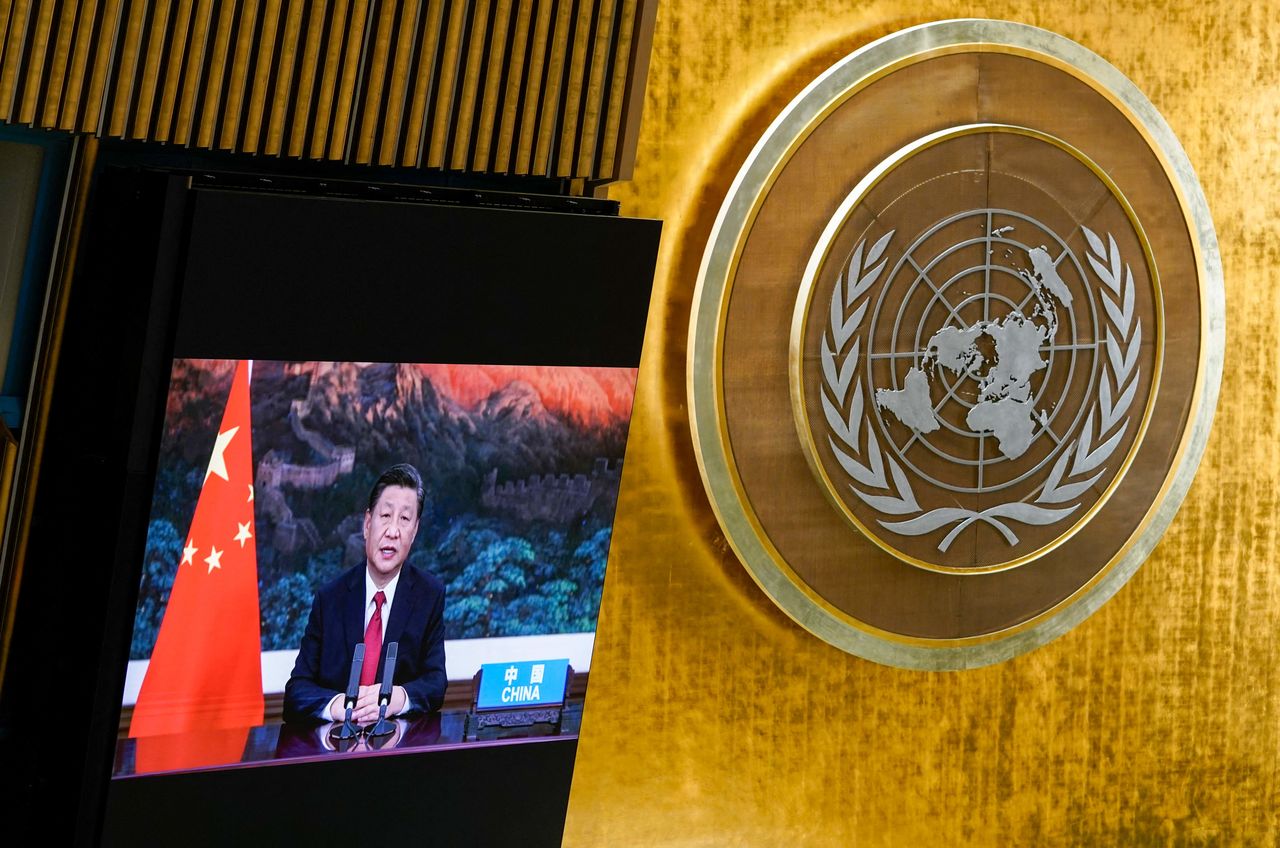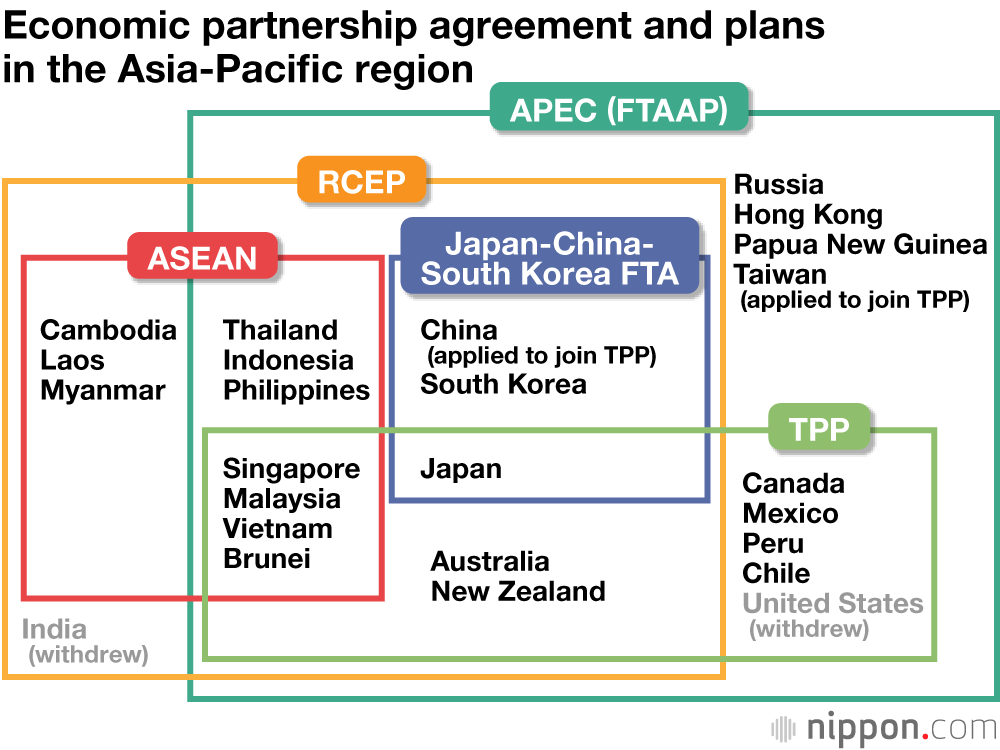
Kishida’s Economic Security Challenge: Focus on China and TPP Expansion
Politics Economy- English
- 日本語
- 简体字
- 繁體字
- Français
- Español
- العربية
- Русский
Since forming his new cabinet on October 4, Prime Minister Kishida Fumio has highlighted economic security as a top priority for his new government. It is a focus reflected in several of his appointments, but particularly in his establishment of a new cabinet post dedicated to the challenge. Minister for Economic Security Kobayashi Takayuki and other members of the prime minister’s hand-picked economic security team face an early test of Japanese leadership in the region as China and Taiwan jostle one another to join the Comprehensive Agreement for Trans-Pacific Partnership (CPTPP).
Kishida’s Team and Its Challenges
Kishida himself helped jump-start internal deliberations on economic security strategy in June 2020, as chair of the ruling party’s Policy Research Council, when he set up a new policy committee dubbed Strategic Headquarters on the Creation of a New International Order. In its preliminary recommendations for an economic security strategy, released the following December, the committee defined economic security as “ensuring Japan’s independence, survival, and prosperity from an economic perspective,” a definition that covers a great deal of ground. Among the priorities the report identified were cybersecurity, supply-chain resilience, steps to foster and protect critical technologies (such as artificial intelligence), securing of telecommunications networks (especially 5G) and other infrastructure, and tighter controls to prevent sensitive technology (such as semiconductors with military applications) from falling into the wrong hands. As this suggests, a sound economic security policy must be predicated on an integrated understanding of strategic and technological issues as well as trade and economics.
Since taking office as prime minister, Kishida has tapped several senior members of the committee to serve in key party and cabinet posts. Amari Akira, who chaired the group, has been appointed LDP secretary general, responsible for steering legislation through the Diet. (Amari earned a reputation as a tough negotiator in 2015, when he helped forge a multilateral agreement on the 12-party Trans-Pacific Partnership as minister for economic revitalization under Prime Minister Abe Shinzō.) Yamagiwa Daishirō is Kishida’s minister for economic revitalization, with a portfolio that includes the CPTPP. And 46-year-old Kobayashi Takayuki has become the nation’s first minister for economic security.
This economic security team is already facing a major test as China and Taiwan jockey for membership in the CPTPP (also referred to as the TPP-11 or simply the TPP). This year, Japan is chairing the CPTPP Commission, the trade framework’s top decision-making body—a responsibility that will fall mainly on State Minister Yamagiwa.
Global Trade Realignment
The CPTPP is part of an ongoing economic realignment in which bilateral free-trade agreements are giving way to multilateral “mega-FTAs.” Regional efforts in this direction include not only the CPTPP, which spans the Asia-Pacific, but also the 15-member Regional Comprehensive Economic Partnership and the proposed 21-member Free Trade Area of the Asia-Pacific. Tokyo is also in the midst of negotiations for a trilateral FTA with China and South Korea.
Japan’s role in these mega-FTAs has major implications for economic security, as the Japan Association of Corporate Executives stressed in an April 2021 report titled “Bolstering Economic Security: The Way Forward for Japan in the Era of Geo-economics.” The report argues that in order for Japan to guarantee its economic security in today’s challenging and changing security environment, it needs “to involve itself strategically and proactively in the multinational rule-making process by taking a leadership role in such economic partnerships as the CPTPP (TPP-11) and the RCEP, and to build up its economic and technological strength, the basis of the national power that supports its international status.”
The United States and Japan were the major forces behind the TPP agreement reached in 2015 by 12 nations of the Asia-Pacific (Australia, Brunei, Canada, Chile, Japan, Malaysia, Mexico, New Zealand, Peru, Singapore, Vietnam, and the United States). That agreement held the promise of an economic partnership encompassing 800 million people (more than one tenth of the world’s population) and representing almost 40% of global GDP. But President Donald Trump withdrew the United States from the agreement in January 2017, just days after his inauguration. It fell to Japan to pick up the pieces and rescue the initiative, sans the United States.
The CPTPP—a slightly modified 11-party version of the TPP—came into force in December 2018. The resulting framework is inevitably much smaller than its predecessor, covering about 500 million people and just 14% of the world’s GDP. But it remains a comprehensive, high-level FTA, eliminating 99% of tariffs and establishing rigorous standards in such areas as electronic commerce, investment, services, and labor rights.
China’s Unsurprising Surprise
On September 16 this year, barely two weeks before the LDP’s leadership election, China submitted a request to join the CPTPP. Taiwan followed suit on September 22. Beijing’s gambit seems to have caught Tokyo off guard, but it was scarcely a bolt out of the blue.
Back in October 2015, when the 12-member TPP agreement was announced, then Prime Minister Abe Shinzō commented that China’s entry into the partnership at some point “would contribute greatly to Japan’s security and the stability of the Asia-Pacific region.” Chinese Minister of Commerce Gao Hucheng signaled that Beijing, too, was open to the idea, stating, “China is willing to cooperate with the United States in formulating global trade regulations following the multilateral trading system so as to push forward regional and world economic development and improve people’s well-being.” But with Washington calling the shots, China’s prospects for membership seemed dim.
Then came America’s withdrawal and the advent of TPP-11 in 2018. Beijing waited until November 2020 before broaching the idea of filling the vacuum left by the United States. That month, at the leaders’ meeting of the Asia-Pacific Economic Cooperation forum (hosted virtually by Singapore), President Xi Jinping stated that his government would “favorably consider joining the Comprehensive and Progressive Agreement for Trans-Pacific Partnership.” China’s formal application came ten months later.

President Xi Jinping of China addresses the general debate of the UN General Assembly by video on September 21, 2021. © AFP/Jiji.
Whether Beijing can gain admission—which requires the unanimous consent of the current members—is another question. China would have its work cut out meeting the CPTPP’s standards for economic transparency and fairness. At his inaugural press conference on October 4, Kishida took an extremely circumspect stance on the issue, saying, “It’s unclear whether China could meet the TPP’s high standards, given its government-owned land, state-owned enterprises, treatment of intellectual property, and so forth.” Yamagiwa implicitly echoed that sentiment at his own press conference on October 5, stating that, as chair of the CPTPP Commission, Japan would work for “the kind of expansion that maintains the TPP’s high standards.”
Taiwan’s bid elicited a far more favorable response on the Japanese side. On September 23, the day after the Taiwanese government submitted its application, President Tsai Ing-wen posted a message in Japanese on Twitter, tweeting, “We are eager to join the TPP and are prepared to accept all of its rules. I hope our friends in Japan will support our bid!” The same day, former Prime Minister Abe tweeted, “We welcome the application by Taiwan, which shares our basic values of freedom, democracy, human rights, and the rule of law.”
But Taiwan’s application faces serious obstacles as well. Beijing has said that it “resolutely opposes Taiwan’s accession” to the CPTPP or any other official agreement on the grounds that Taiwan is an “inalienable part of China.” Since all members must approve any new entry, Taiwan’s bid would become hopeless were China to be admitted first. On the other hand, admitting Taiwan before China would be a major affront to Beijing with potentially serious repercussions. Simultaneous accession is one option being discussed, but a workable solution could take years to negotiate. For now, as chair of the CPTPP Commission, Japan must steer a narrow course. It must also take care not to be blindsided by Singapore, which takes over as chair 2022 and has welcomed China’s application.
Toward an Inclusive Asia-Pacific Community
Meanwhile, the RCEP, a Chinese-led initiative, is also taking shape, albeit without India’s participation. In November 2020, after India announced its withdrawal (apparently concerned about an influx of cheap Chinese imports), the RCEP agreement was signed by 15 parties: Australia, Brunei, Cambodia, China, Indonesia, Japan, Laos, Malaysia, Myanmar, New Zealand, the Philippines, Singapore, South Korea, Thailand, and Vietnam. While ratification has taken more time than anticipated, the agreement could come into force as early as January 2022. Even without India, the trade pact is the world’s largest, covering about 30% the world’s population and about 30% of its GDP. In terms of substance, however, it falls short of the CPTPP, eliminating only about 91% of tariffs (over a period of 20 years) and incorporating relatively few provisions to protect the environment, labor rights and so forth.
Once the RCEP comes into effect, trade negotiators in the region can turn their attention to an even more ambitious initiative, the Free Trade Area in the Asia-Pacific. Comprising all 21 members of APEC, the FTAAP would encompass some 40% of the world’s population and 60% of its GDP.
How is such a comprehensive framework to be built? The CPTPP as it stands would fit neatly into the FTAAP as currently envisioned. If the CPTPP and the RCEP could be merged at some point in the future, then the FTAAP would be essentially a fait accompli.
A Need for Savvy Statecraft
The international security situation has evolved rapidly since then Prime Minister Suga Yoshihide bowed out of the LDP leadership race in early September. On September 15, Australia, Britain, and the United States announced the establishment of a new trilateral security framework (AUKUS). On September 24, the leaders of Australia, India, Japan, and the United States gathered at the White House for the first-ever in-person Quad summit. Since the beginning of October, China has been flexing its military muscles in Taipei’s direction with almost daily incursions into Taiwan’s air defense identification zone—possibly in reaction to AUKUS and other US-led “China containment” strategies. Washington and Beijing remain sharply at odds over the future of Taiwan.
Even so, there are signs of a possible thaw in bilateral relations. On September 24, Huawei Chief Financial Officer Meng Wanzhou was released from Canadian custody under an agreement with US prosecutors. Given the symbolic importance of this high-profile case in the deterioration of US-China ties under Trump, its resolution could well presage a relaxation of tensions.
That said, the idea of “decoupling” from China has rapidly gained ground among Americans since the COVID-19 pandemic hit. In this climate, leading the drive for free and fair trade in the Asia-Pacific region has become a solemn duty for the Kishida administration and a must for Japan’s economic security.
Kishida lost no time making his diplomatic debut as prime minister, beginning with a telephone conference with US President Joe Biden on October 5. Through this and subsequent exchanges with Australian Prime Minister Scott Morrison, Russian President Vladimir Putin, Chinese President Xi Jinping, and Indian Prime Minister Narendra Modi, he maneuvered gracefully, reaffirming his commitment to the Quad without slighting China and Russia.
Going forward, the Kishida administration should do its utmost to draw the United States back into the TPP; in America’s absence, the framework lacks a center of gravity. China’s application, on the other hand, is motivated in large part by Beijing’s desire to drive a wedge between the United States and its Asian allies and should be treated accordingly. But it could be turned to good purpose if used to encourage the reforms China needs to make in order to qualify. This is the kind of savvy, hard-nosed statecraft Japan’s leaders must practice in the coming years.
(Originally published in Japanese. Banner photo: Newly installed Prime Minister Kishida Fumio in a videoconference with Australian Prime Minister Scott Morrison on October 5, 2021. © Jiji.)
China Taiwan Economic Partnership Agreement economic security
